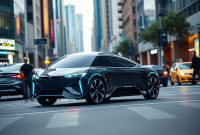Performance is a vital factor when choosing your next vehicle, and in 2024, the debate between electric and gas cars intensifies. Understanding how each type of vehicle performs can help you make a more informed decision based on your unique needs and driving style. Performance encompasses acceleration, handling, range, and overall driving experience, so let’s explore the distinctions between electric and gas vehicles.
As far as acceleration, electric vehicles (EVs) often have the upper hand. The instant torque provided by electric motors allow you to experience rapid starts and swift off-the-line power. If you enjoy merging onto highways or navigating busy city streets, EVs can offer a thrilling experience. Models from leading manufacturers often clock impressive 0-60 mph times, bringing you an exhilarating driving experience that gas vehicles may struggle to match, particularly in the lower speed range.
On the other hand, gas cars typically deliver a consistent performance over extended periods, especially during long drives. Traditional internal combustion engines can maintain speed and performance levels that are reliable and familiar to many drivers. You may find that gas cars still offer a relaxed driving experience due to their engine characteristics, which many drivers appreciate when cruising or maintaining speed on the highway.
Handling can also vary between these two car types. Electric cars tend to have a lower center of gravity because the heavy battery packs are positioned at the bottom of the vehicle. This design can enhance stability in corners and overall maneuverability. If you prioritize sporty handling and tight cornering, an electric vehicle might be more appealing. However, gas vehicles still benefit from advancements in technology and suspension systems, enabling them to perform well on twists and turns. Your personal preference will play a significant role in deciding which you prefer.
Range is another critical aspect to consider when evaluating performance. Gas vehicles generally have a longer driving range compared to most electric models. You can refill a gasoline tank quickly at service stations, making long trips less of a logistical challenge. However, battery technology is evolving, and 2024’s electric cars are boasting improved ranges and faster charging solutions. You might find that newer models can align closely with your daily commuting distance, making them viable options for longer trips but requiring some planning for charging stops.
Maintenance and operational costs are also factors you should weigh when examining performance. Electric vehicles often require less maintenance due to fewer moving parts, which can save you time and money over the long run. With many EVs, you can often enjoy reduced fuel costs, making them economically attractive. Gas vehicles, while more familiar and widely available, require regular servicing, which could factor into your budget.
To sum up, both electric and gas vehicles have unique performance characteristics that can cater to various driver preferences in 2024. If acceleration, handling, and lower maintenance costs are significant to you, electric may be the preferred choice. Conversely, if you’re looking for a familiar driving experience with longer range and quick refueling, gas vehicles continue to be strong contenders. Ultimately, considering your driving habits and expectations will help you settle on the right option for you.



